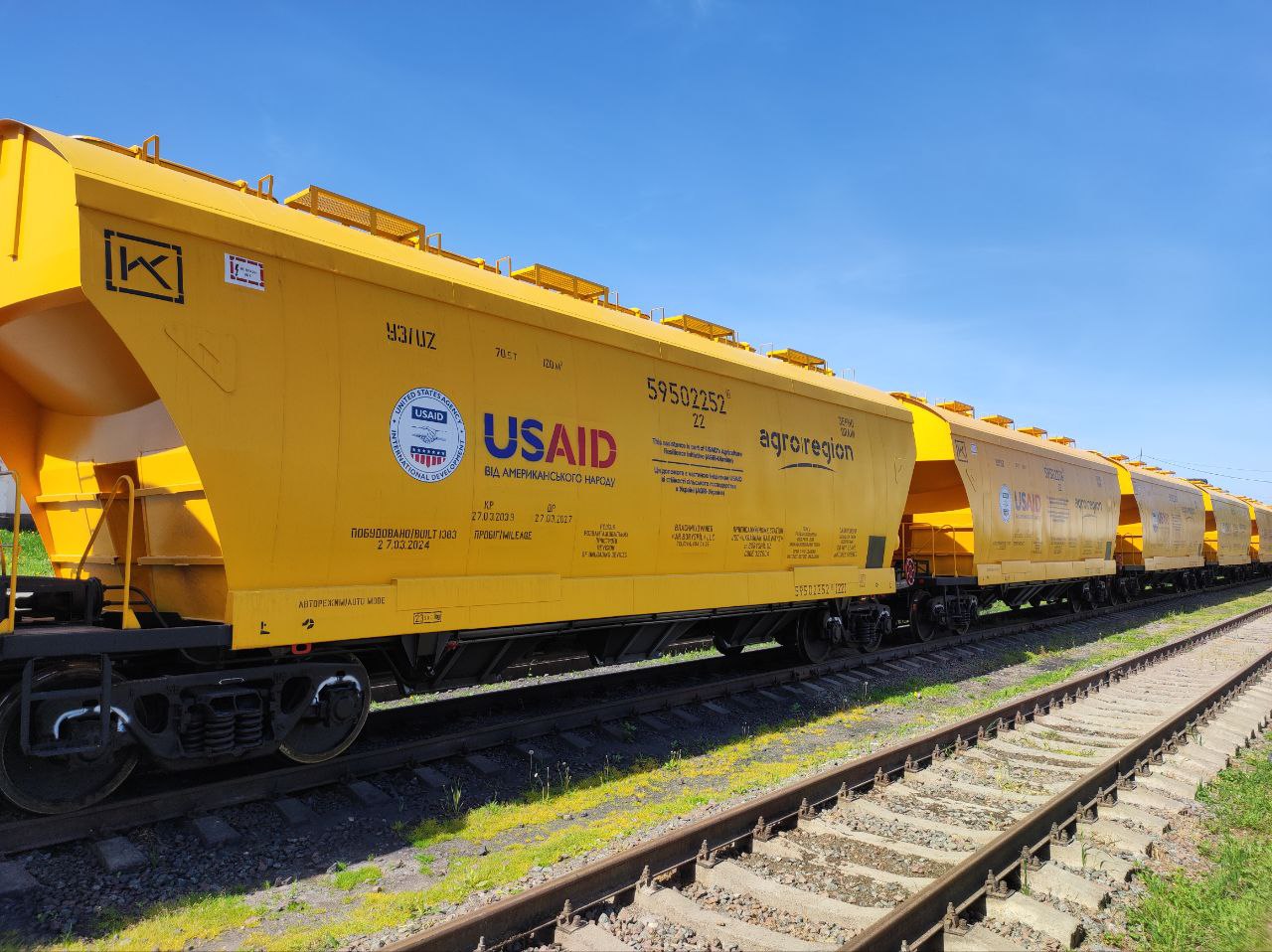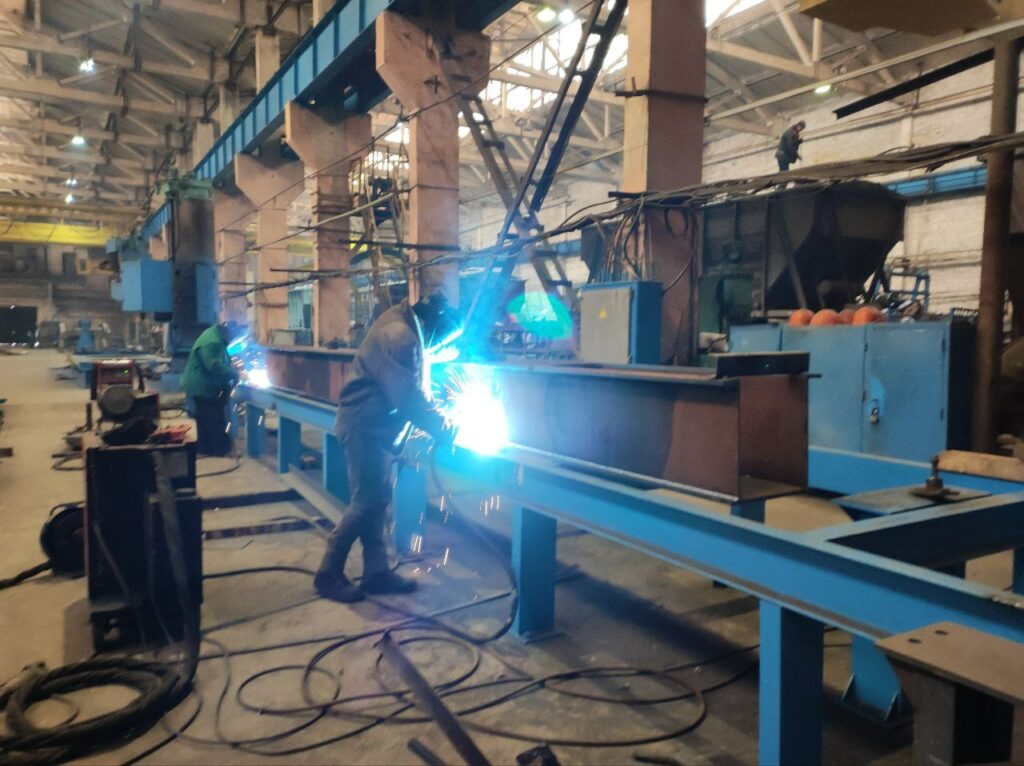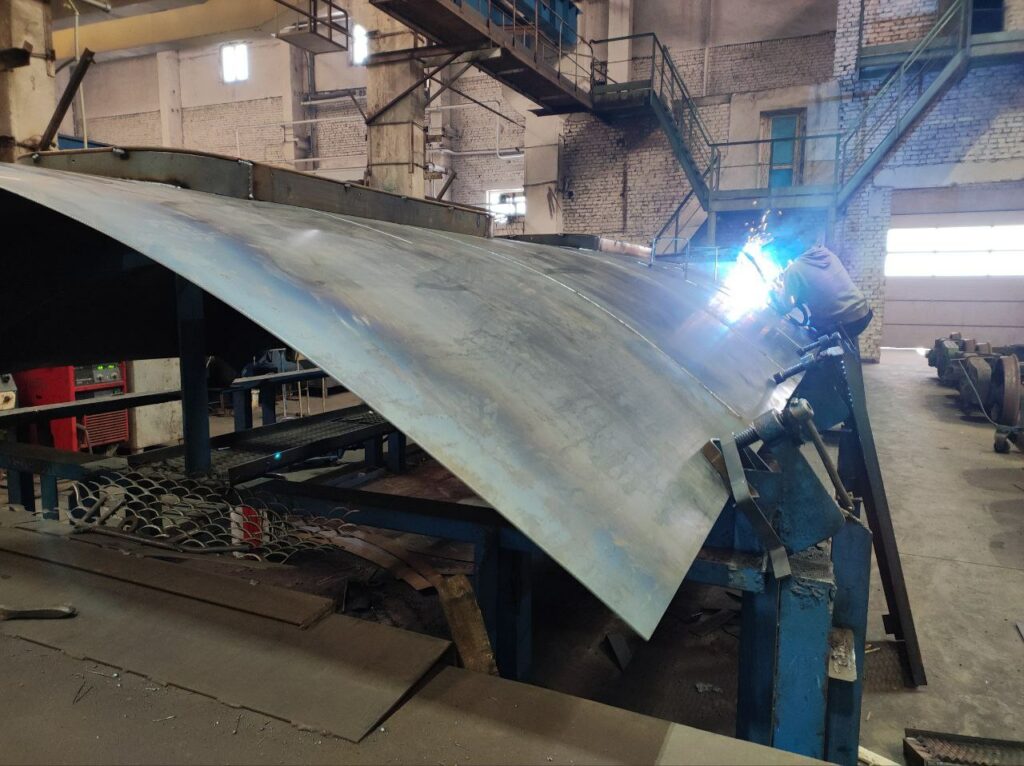The Experimental and Mechanical Plant “Karpaty” (EMP Karpaty) produced 190 grain hopper wagons for USAID Economic Resilience Activity’s (USAID ERA) beneficiaries. USAID ERA transfers these wagons to agro-exporters, who facilitate the export of Ukrainian grain during the war and contribute to strengthening global food security.
In 2023, USAID ERA requested, 50 factory manufactured wagons for Nibulon from Karpaty. This year, USAID ERA ordered 300 wagons, Karpaty is currently manufacturing for other grain export partners. This order is 45% annual orders to Karpaty.
Since the beginning of Russia’s full-scale aggression against Ukraine, the demand for grain wagons has significantly increased. Due to Russia’s attempts to block sea and river ports, agro-exporters have redirected logistical routes and now transport grain by rail to European Union countries. This requires hopper wagons, which are sealed to prevent moisture contamination (rain or snow). One wagon can carry up to 70 tons of grain.
Karpaty manufactures 3 wagons per day. Turners, welders, millers, metal cutters, painters, and many other specialists work on their production line.
During the war, Karpaty has faced many staffing shortages as their employees joined the military. Roles that were formerly held by men are now being partially occupied by women. Moreover, automation increased and automated welding machine were introduced, significantly boosting the company’s mechanization in the production facilities.
One grain wagon weighs 23.5 tons. Most of the components are Ukrainian produced, such as the wagon axle, railway wheel, side frame, bolster beam, part of the draw and buffing gear, brake equipment, and other details. However, the steel used for the body is imported from other parts of Europe. By using component parts manufactured in Ukraine, EMP Karpaty supports the local economy.
“Now, during the full-scale invasion, orders for grain hopper wagons make up 75% of our workload. Thanks to the USAID ERA last year, we received an order and completed it on time. We manufactured 50 wagons, ensuring 650 of our employees had work and received salaries. As a business, we also promptly paid taxes to budgets at various levels. This is one example of how international aid influences the Ukrainian economy,” says Oleksandra Badior, Marketing Director at EMP Karpaty.
Ukrainian wagon manufacturers face supply chain issues, mostly steel products, during the war because some components were previously sourced from Russia or Ukrainian enterprises which are now destroyed by Russian aggressors. The main issue is steel–thick sheets and profiled steel–which were manufactured at the metallurgical plants of Ilyich and Azovstal in Mariupol, Donetsk region, now occupied. In 2022, Karpaty looked for an alternative solution. Eventually, 95% of each wagon now consists of products from Ukrainian manufacturers.
Currently, EMP Karpaty has orders to fill until August 2024. In addition to grain wagons, Karpaty produces cement wagons and carriers, which will be very important for restoring critical infrastructure and housing in Ukraine.
In 2023, all three of the wagon manufacturing factories in Ukraine produced a combined total of 1967 wagons. EMP Karpaty was the leader, manufacturing 567 wagons for the Ukrainian market, 5% more than in 2022. Today, Karpaty employs over 650 people.
USAID ERA is one of the key partners of USAID, which implements the Agricultural Sustainability Initiative of Ukraine (“AGRI-Ukraine”), budgeted at $350 million. This initiative was launched in 2022 with the aim of strengthening Ukrainian agricultural exports and mitigating the global food security crisis exacerbated by the war. As part of the “AGRI-Ukraine” initiative, USAID ERA cooperates with state and private enterprises to supplement and attract investments in transportation and transshipment of grain, which Ukraine desperately needs.










